Top Photo: Jewelweed dripping with dew.
With cooler nights come misty mornings. If you need evidence that spiders and other web building creatures are about in great numbers simply go out for a walk and see for yourself.
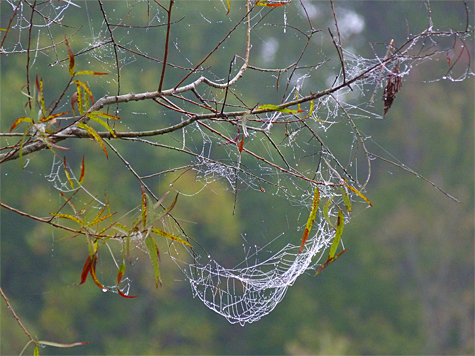
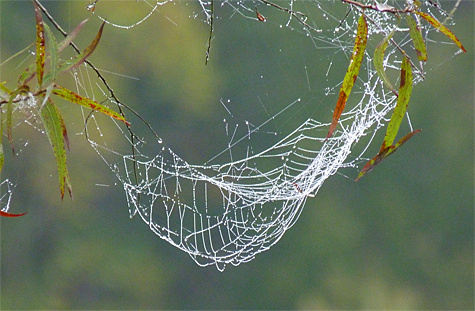
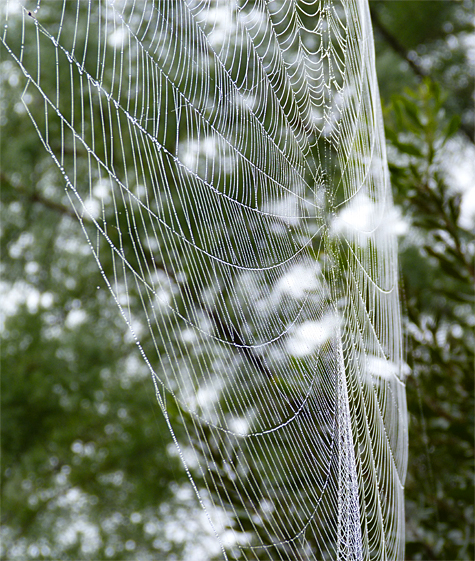
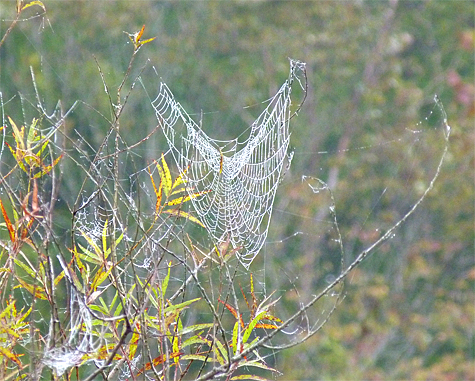
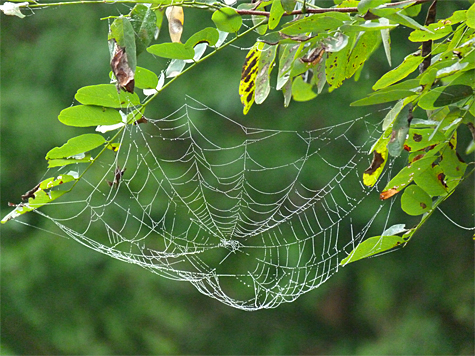
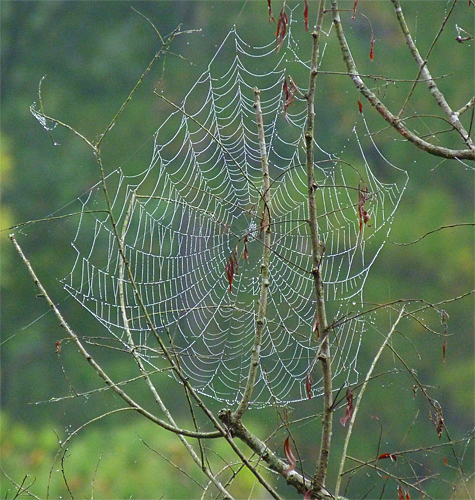
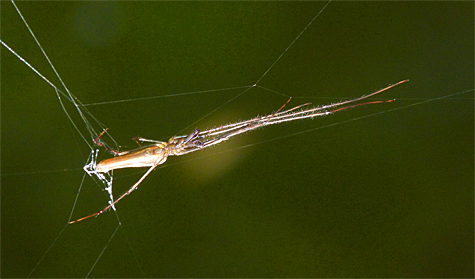
Longed-jawed spiders are in a different family than the familiar orb weavers that constructed the webs in the top six photos. Orb weavers are part of the Araneidae family of spiders. Long-jaweds are in the Tetragnathidae family. They, long-jawed spiders, also build orb webs (circular webs) but they are often built over water and have fewer radii, or spokes. The webs are also oriented horizontally, not vertically as in Araneidae (typical garden spiders).
Longed-jawed spiders get their name from their exceptionally long chelicerae (fangs). They often stretch themselves out (pictured) which affords them a form of camouflage, they look like a twig.
Fall web worms have been munching on our tree’s leaves here at the Museum for a few months now. Their webs have certainly not been as obvious as they are now, covered with the morning dew.
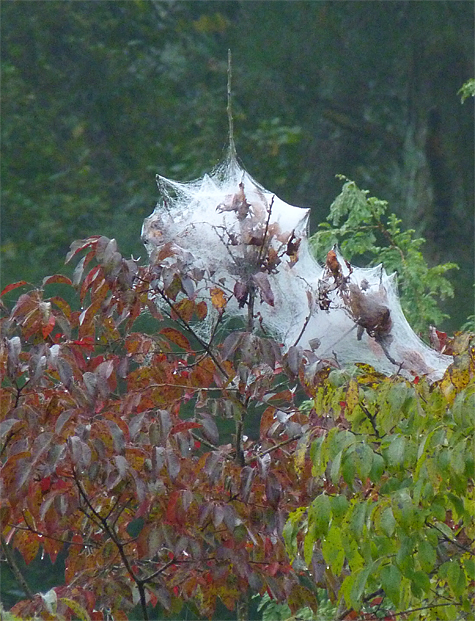
It may be hard to get yourself started on chilly, misty mornings, but getting out early before the mist burns off, the webs dry or are blown apart by the inevitable winds that come each morning around 9 or 10 AM, is worth the little effort it actually takes to do so. The light is softer, the colors more saturated, and there are fewer people out.
See you in the mist!